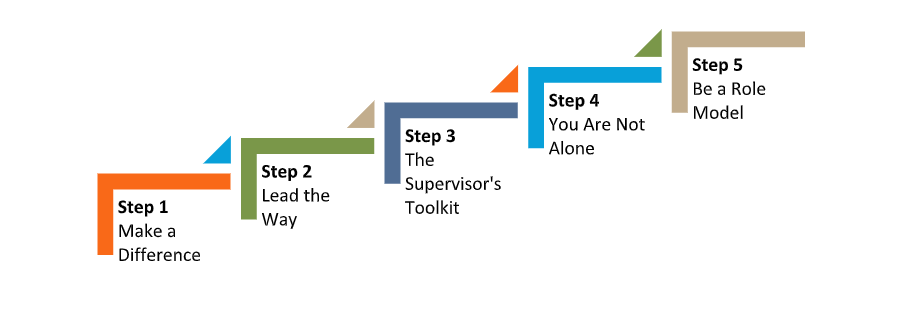We can help you today
to maintain a safe and healthy workplace!
- 1 (888) 552-1155
- sales@hrproactive.com
Please complete the form below and we will contact you shortly.

In Canada, each province, territory and the federal government has its own Occupational Health and Safety legislation. O H & S legislation outlines the general rights and responsibilities of the employer, the supervisor and the worker through an Act and related regulations. These regulations define the application and enforcement of the Act.
When a person is hired or promoted to the position of a supervisor, it usually means a pay raise. But it also means more responsibilities, including legal responsibilities relating to the health and safety of the workers under your supervision. It’s a natural thing for a new supervisor to wonder if he or she is up to the challenge. In fact, asking yourself that question will help you figure out what additional information or instruction you might need to do your job well.
People expect a lot from a supervisor, no matter how big or small the workplace is. A healthy and safe workplace matters to everyone, and Occupational Health & Safety Legislation of your Province or Territory expects supervisors to be the front-line guardians of healthy and safe workers, whether the work is performed on a construction project, in a healthcare facility, an industrial establishment or in a mine. Every good employer also expects that from you, and so do the people you supervise.
Occupational Health & Safety legislation is very clear about the different roles of the employer, supervisor and worker, and how those roles cooperate to make a safe and healthy workplace. This is the Internal Responsibility System, or IRS as it’s commonly known.
As a supervisor, you are a crucial part of your workplaces Internal Responsibility System. This is a very important concept for workplace health and safety and you will learn more about this throughout this training.

Studies show that new and young workers are four times more likely to get injured during their first month on the job than at any other time. That’s because they often aren’t told about or don’t understand the hazards of the job. They don’t know what to expect from their employer, their supervisor and of themselves. Sometimes they aren’t sure what questions to ask. Sometimes they don’t even know whom to ask.
Each day in Canada, more than forty workers under the age of 19 are injured on the job. In 2017, according to the Association of Workers’ Compensation Boards of Canada, there were 951 workplace fatalities recorded in Canada. Among these deaths, twenty-three were young workers: nineteen aged 20-24 and four aged 15-19. During the same period, 31,441 young workers lost time due to a work-related injury or disease: 23,269 between the ages of 20-24 and 8,172 between the ages of 15-19.


Employees in successful workplaces understand that a safe and healthy workplace is a productive workplace. They also know that they have to work together to create and maintain a safe and healthy workplace.
All workers have the right to refuse work if they have reason to believe it’s dangerous. You can also refuse work if you have reason to believe your work environment is likely to endanger you or a co-worker, or that you or a co-worker is in danger from workplace violence. Some workers, such as nurses, firefighters and police officers cannot refuse work if the danger is a normal part of their job or if refusing work would put someone else in danger.
Inform the employer of any health and safety concern, even if you have the ability and authority to handle it yourself. Your employer may need to know about the problem in order to fulfill his or her duties.
You should never have to be worried that you will be reprimanded for asking questions, reporting a problem or expecting your employer and supervisor to follow health and safety regulations.
Some of the most common hazards in workplaces include:
R.A.C.E. is a commonly used process for dealing with hazards. R.A.C.E. stands for Recognize, Assess, Control and Evaluate. These steps, when done in order, help the workplace identify and control hazards. Supervisors are encouraged to communicate with workers, the employer, and the Joint Health and Safety Committee or Health and Safety Representative throughout this type of process.
The R.A.C.E. process is a way to help you deal with hazards, but it isn’t everything. You also need to monitor the work. This means that you need to take steps to make sure workers understood the information you gave them and are following the workplace health & safety policies and procedures AND are using or wearing their personal protective equipment. If you see a worker exposed to a hazard, it’s your job to talk to them about it. You have to make sure Occupational Health & Safety legislation of your Province or Territory, any applicable regulations and the workplace health & safety policies and procedures are being followed, and you have to enforce those procedures.
If someone comes to you with a health and safety concern or to report a close call, you need to listen to them because these are warning signs of potentially serious problems ahead. You also need to inform your employer of these concerns. If you can solve a problem on your own or with the worker, you should do so. If you need help, you should ask your employer, your JHSC or Health and Safety Representative. Reports from workplace inspections by JHSCs or Health and Safety Representatives along with incident investigations done internally or by the Labour and/or Employment Standards Branch of your Province or Territory are important tools in your supervisor’s toolkit. When they are used effectively, they help to control hazards and prevent injuries.
Many supervisors are promoted to that position because they were good at their previous job. They learned as much as they could about that job, the hazards involved, and how to work safely. They knew how to do their work in a safe and healthy way. But they may not be too sure about what’s involved in supervising workers. Now they are a supervisor and their duties have changed. But do they know everything they need to know about this new role? That’s the question you should ask yourself. You may know a bit about Occupational Health and Safety Legislation and the various regulations that are attached to it, but do you know enough about the specific requirements in your Province or Territory and about which of its regulations apply to your workplace? You may have the necessary experience in the work you are being called upon to supervise, but do you know enough about what’s actually involved in supervising workers?
Sometimes a worker will come to you with a question and you just don’t know the answer. Often the answer is right there in your workplace. You can find answers in the workplace health & safety policies and procedures, the safety data sheets that come with hazardous materials, the operating manuals for equipment or the recommendations of the JHSC or Health and Safety Representative.
Telling people to work in a safe and healthy way isn’t all there is to being a supervisor. Sometimes workers want to take shortcuts because they think it will help them get the job done faster. Sometimes they’re tired, or they’re having a bad day. There will be days when you’re tired or having a bad day, too. But you need to be a role model for safety at all times. As a supervisor, you need to follow the workplace health & safety policies and procedures, wear your personal protective equipment and stay safe. If you don’t do those things, others will think it’s okay to not follow the workplace health & safety policies and procedures. Workers are watching you and learning from what you do. How you supervise the work, the way you think about the work and talk about it, can affect the safety of the workers you supervise. You want to help the workers choose the safe path every time. You can help them by being easy to talk to and answering their questions. But the best thing you can do is to “practice what you preach.” That means always complying with Occupational Health & Safety Legislation and following the health and safety work practices in your workplace. It means explaining how to work safely and correcting unsafe work situations whenever you see them.
Please complete the form below and we will contact you shortly.